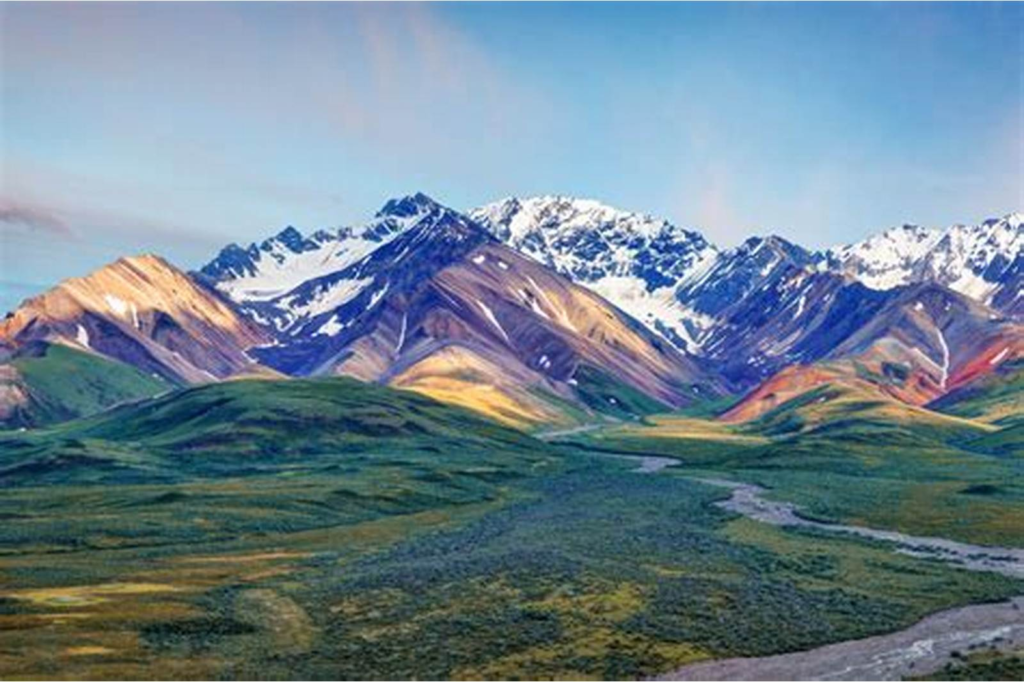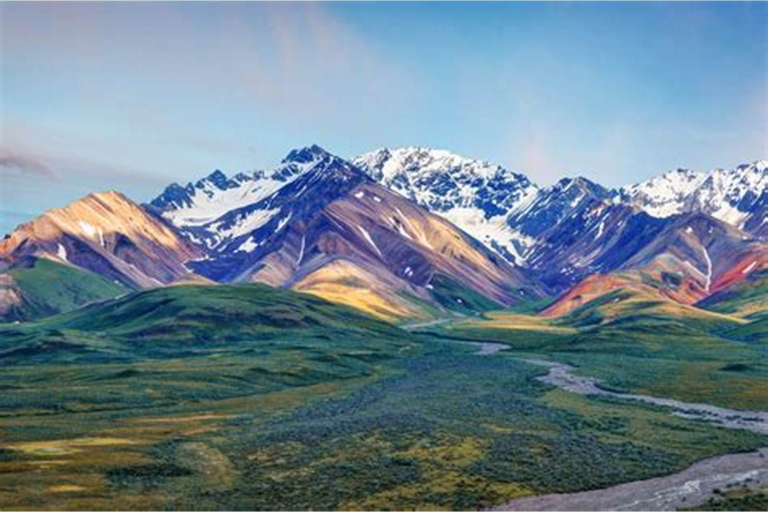Alaska, often referred to as “The Last Frontier,” is a land of unparalleled beauty and vastness. Its name is derived from the Unangax̂ (Aleut) word “alaxsxa” or “alaxsxix,” meaning “mainland” or “great land.” This immense state boasts a diverse range of physical characteristics, from towering mountains to expansive coastlines. Understanding Alaska’s geography, history, culture, and economy provides a comprehensive insight into what makes this state truly unique.
Geographical Marvels
Alaska’s sheer size is staggering; it is the largest state in the U.S., encompassing over 663,000 square miles. The state’s landscape is a tapestry of natural wonders. The Alaska Range, located north of Anchorage, is home to Denali (formerly known as Mount McKinley), which stands at 20,310 feet, making it the highest peak in North America. This majestic mountain is a focal point for climbers and nature enthusiasts alike.
The state’s coastline is equally impressive. With about 34,000 miles of indented tidal shoreline, Alaska accounts for a significant portion of the United States’ continental shelf. This extensive coastline includes approximately 15,000 square miles of fjords and inlets, offering breathtaking views and rich marine biodiversity.
Alaska’s location is critical to understanding its role in world history. Its vast size and geographic shape contribute to its diversity, influencing both its climate and ecosystems. The state’s position also makes it a strategic point for various economic and military activities.
A Glimpse into History
The history of Alaska is as rich and varied as its landscapes. Indigenous peoples have inhabited this region for thousands of years, developing distinct cultures and traditions deeply connected to the land and sea. The arrival of Russian explorers in the 18th century marked the beginning of significant changes. The Russians established settlements focused on the fur trade, leading to the creation of Russian America.
In 1867, the United States purchased Alaska from Russia, a transaction often referred to as “Seward’s Folly” due to skepticism about its value. However, this acquisition proved advantageous, especially with the discovery of gold in the late 19th century, which attracted a surge of settlers and prospectors.
Alaska’s journey to statehood culminated on January 3, 1959, when it became the 49th state of the U.S. This milestone marked a new chapter, integrating Alaska more fully into the nation’s political and economic framework.

Cultural Tapestry
Alaska’s culture is a vibrant blend of indigenous traditions and influences from Russian colonization and American settlement. Indigenous communities, including the Iñupiat, Yupik, Aleut, and various Athabascan and Tlingit tribes, have preserved their languages, arts, and customs, contributing to the state’s rich cultural mosaic.
Russian colonization introduced elements such as the Russian Orthodox Church, which still has a presence in many Alaskan communities. The subsequent American influence brought further diversity, as settlers from various backgrounds made Alaska their home.
Today, Alaska celebrates this cultural diversity through numerous festivals, museums, and cultural centers. Events like the Alaska Native Heritage Center in Anchorage offer visitors a chance to experience traditional dances, crafts, and storytelling, providing insight into the state’s indigenous heritage.
Economic Landscape
Alaska’s economy is deeply intertwined with its natural resources. The discovery of oil in Prudhoe Bay in 1968 transformed the state’s economic landscape, leading to the construction of the Trans-Alaska Pipeline System. Oil revenues have since played a pivotal role in funding state services and infrastructure.
Fishing is another cornerstone of Alaska’s economy. The state’s waters are teeming with salmon, halibut, and crab, supporting both commercial and subsistence fishing. The seafood industry not only provides employment but also contributes significantly to exports.
Tourism has also become a vital economic driver. Visitors are drawn to Alaska’s pristine wilderness, seeking adventures such as glacier cruises, wildlife viewing, and exploring national parks like Denali and Glacier Bay. This influx of tourists supports local businesses and showcases the state’s natural beauty to the world.
Modern Developments
In recent times, Alaska has continued to evolve while facing unique challenges. The state’s remote location and harsh climate can make transportation and infrastructure development difficult. However, advancements in technology and transportation have improved connectivity, benefiting both residents and industries.
Environmental conservation remains a priority, balancing resource development with the preservation of Alaska’s pristine ecosystems. Policies like the Alaska National Interest Lands Conservation Act reflect efforts to protect vast areas of wilderness while allowing for sustainable resource use.
The state’s demographic landscape is also changing. Urban centers like Anchorage have grown, becoming melting pots of cultures and ideas. At the same time, rural communities strive to maintain their traditional ways of life, highlighting the dynamic interplay between modernization and tradition in Alaska.
Frequently Asked Questions
What is the origin of the name “Alaska”?
The name “Alaska” is derived from the Unangax̂ (Aleut) word “alaxsxa” or “alaxsxix,” meaning “mainland” or “great land.” This reflects the indigenous peoples’ deep connection to the land and its significance in their culture.
How did Alaska become part of the United States?
In 1867, the United States purchased Alaska from Russia for $7.2 million, a transaction often referred to as “Seward’s Folly” due to initial skepticism about its value. The discovery of natural resources, particularly gold and oil, later underscored the strategic and economic importance of this acquisition.
What are the main economic activities in Alaska?
Alaska’s economy is primarily driven by oil production, fishing, and tourism. The state’s vast natural resources, including oil reserves and rich fisheries, play a crucial role in its economic development. Tourism also contributes significantly, with visitors attracted to Alaska’s natural beauty and cultural heritage.
How does Alaska’s geography influence its climate?
Alaska’s vast size and diverse geography result in a wide range of climates. Coastal areas experience milder temperatures due to the moderating influence of the ocean, while interior regions can have more extreme temperatures. The state’s varied topography, including mountains and valleys, also affects local weather patterns.
What cultural influences are present in Alaska?
Alaska’s culture is a blend of indigenous traditions, Russian colonization, and American settlement. Indigenous communities have preserved their languages, arts, and customs, while Russian and American influences have introduced new elements, creating a unique cultural tapestry.
How does Alaska balance resource development and environmental conservation?
Atalanta Alaska strives to balance resource development with environmental conservation through policies and regulations that promote sustainable practices. Acts like the Alaska National Interest Lands Conservation Act aim to protect vast areas of wilderness while allowing for responsible resource use, reflecting the state’s commitment to preserving its natural heritage.
Conclusion
The Eerie Alaska stands as a testament to nature’s grandeur and human resilience. Its vast landscapes, rich history, and cultural diversity make it a unique and captivating part of the United States. As the state continues to navigate the complexities of modern development and conservation, it remains a place where the spirit of adventure and the call of the wild are ever-present.
To read more, Click Here
